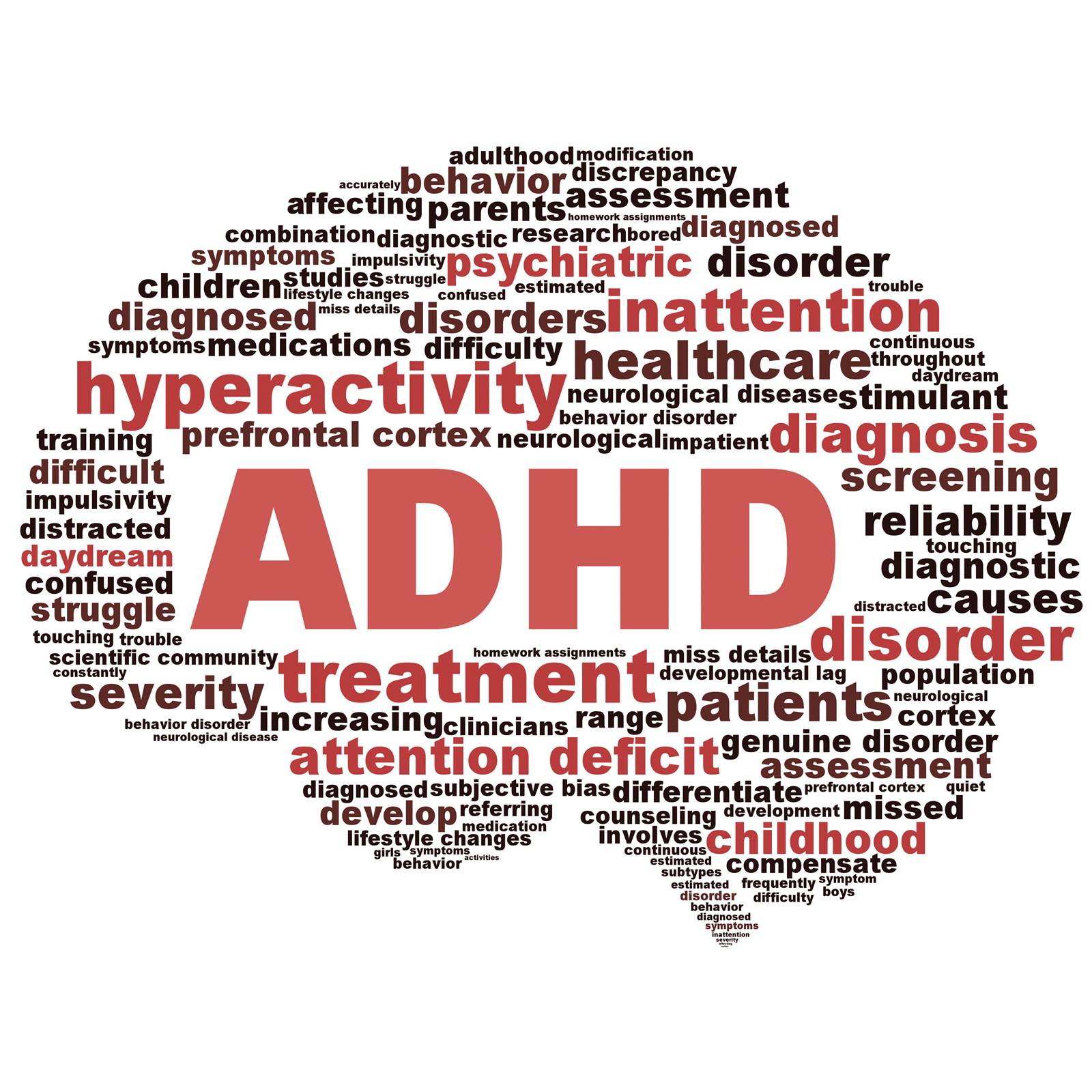Attention Deficit Hyperactivity Disorder
ADHD – What is it?
Attention Deficit Hyperactivity Disorder (ADHD) is a complex neurological disorder that is commonly identified through three distinct behavioural symptoms; namely inattention, hyperactivity and impulsivity.
The inattention component of ADHD is exhibited in a child’s inability to remain focused or on task and these children are easily distracted by occurrences that happen in the world around them.
Hyperactivity is an excessive activity which, unfortunately, tends to lead to disruptive behaviours at home and in the classroom. It is experienced by the child as an internal restlessness which impacts on their thought processes as well as in the behaviours which they display. The impulsive element of ADHD often leads to children saying or doing things without consideration of the negative impact that it might have to themselves or others.
Prevalence
ADHD is often identified in children before they reach the age of seven but it can be missed and/or misdiagnosed, going undetected until adulthood. Surveys of children in the UK aged between 5 and 15 years of age show that the prevalence of ADHD in boys stands at 3.62% and in girls a much lower figure of 0.85%. In contrast, the worldwide prevalence of ADHD stands at around 5%.
Gender
The symptoms of ADHD do appear to have gender differences. In boys, their behaviour is more external and can be seen through behaviours such as running, jumping and being loud, whilst in girls the behavioural symptoms are often less obvious due to their subtle and internalised nature. This disparity may be more due to the differences in socialisation rather than the manifestation differing between boys and girls where social expectations of the genders impact on their behaviour. This difference in expression of symptoms could also be a reason for the lower diagnoses in girls as opposed to any real difference in prevalence between the two sexes. Whilst boys are more likely to display their frustrations of ADHD externally and act out physically, it is thought that undiagnosed ADHD in girls can lead onto further internalised mental health problems such as low self-esteem, depression, anxiety issues and the development of eating disorders.
This difference in expression of symptoms could also be a reason for the lower diagnoses in girls as opposed to any real difference in prevalence between the two sexes. Whilst boys are more likely to display their frustrations of ADHD externally and act out physically, it is thought that undiagnosed ADHD in girls can lead onto further internalised mental health problems such as low self-esteem, depression, anxiety issues and the development of eating disorders.
Impact on Education
According to Department of Education figures, there has been a tripling of children being taught in class sizes of 36 children or more since 2011.
With talkativeness, loudness and the constant need to move around being a feature of ADHD, it can easily be deduced that this steady increase in classroom sizes could only add to the additional strain of teachers managing the needs of neurodiverse children and in particular the hyperactivity in ADHD children. This is also particularly worrying in light of the fact a Government White Paper, ‘Back on Track’, highlighted that 39% of children with ADHD have had fixed-term exclusions from school.
Strides are being made by activist groups such as The UK ADHD Partnership whom are vocal and making some headway towards getting ADHD recognised as a Special Educational Need (SEN).
However, until then, so as to avoid a child being negatively and unnecessarily labelled as ‘a problem’ it is best practice for parents to work closely with the school.
The symptoms of ADHD are unique to every child. This means that there can be no one-size-fits-all’ approach.
One method of working and addressing the needs of a child is likely to be very different from addressing the needs of another. Finding the right method will take partnership work between all of those who work and interact with the child.
Medical Advice
There is no single test for ADHD, rather, it is assessed using information from a number of sources; namely interviews with the child, their parents, and reports from the school and other significant people in the child’s life.
Doctors are also able to help with practical interventions, such as the ways in which a parent might be able to support their child to be organised at home and at school. The teachers may endeavour to seat a child at the front of the classroom so as to reduce the number of distractions that they can be exposed to in a busy environment.
Medication can also be prescribed to help with the hyperactivity element of the disorder. For this, the child is usually referred to a child psychiatrist, a paediatrician or Child & Adolescent Mental Health Services (CAMHS). Under consultation and through careful observation of the child, the most suitable combination of medication can be found to help address the behaviour.
In a seemingly contradictory way, some research evidence points to the brain’s abnormally slower transmission of messages between the different areas which cause the symptoms of ADHD. Research conducted on children with the disorder show, through brain-imaging scans, that there are several regions of the brain which are largely inactive or dysfunctional as a result of neurotransmitter imbalance.
An analogy would be a fast car that takes a bit longer to get going and bit longer to react and stop when given the red-light cue.The environmental factors impacting on development are also an area of research for ADHD as are studies into hereditary factors, where there is strong indication ADHD runs down the family line.
If you have concerns about your child
If you suspect that your child has ADHD then speak to your child’s class teacher if at primary, or their tutor or Head of Year if at secondary school. As your child will have multiple teachers in secondary school, patterns in behaviour can be easily missed. Request a ‘round robin’ to be conducted, where each teacher writes a mini report with a focus on the key indicators of ADHD.
The disorder may have gone undetected by teaching staff, however, with a prompt from yourself they are certainly able to begin keeping an eye out for behaviours.
Keep a diary with detailed descriptions and prevalence of the behaviours that are displayed at home and at school. This will serve you well if you then decide you have good reason to seek out expert support from the doctors.
Most of all do not panic if you suspect, or if your child is given a diagnosis of ADHD.
Detection is key towards your child’s future happiness and success.
For more information visit: www.teen-behaviour.com










